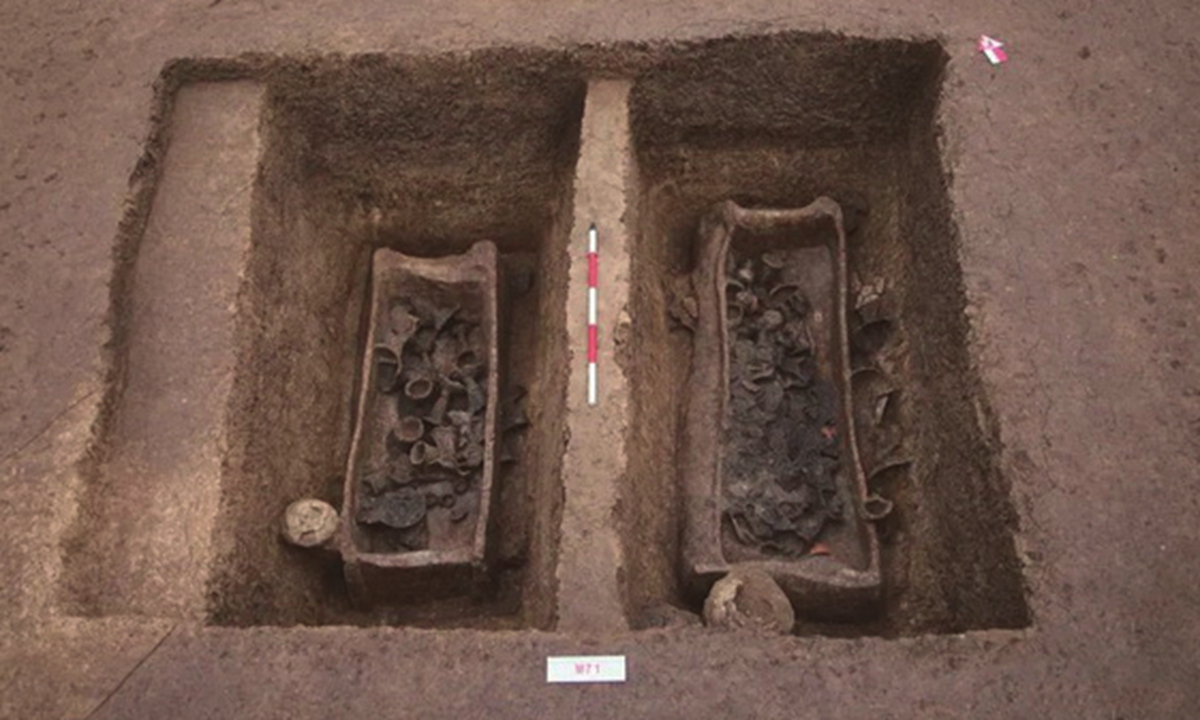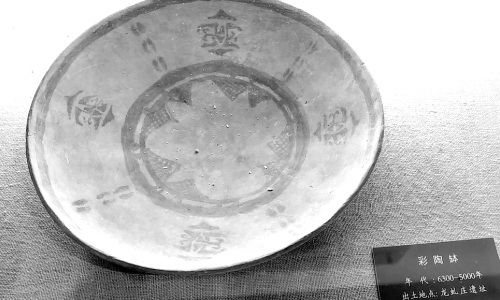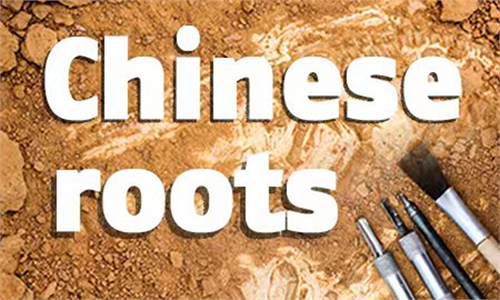ARTS / CULTURE & LEISURE
Chinese roots

Tombs at the Chenghe Ruins Photo: Courtesy of Sina Weibo
Chenghe Ruins: Yangtze River city established thousands of years ago
Under endless farmland in Shayang county, Central China's Hubei Province, an ancient city dating back to 5,000 years ago remained buried until its discovery in 1983. Since then, archaeologists have been working on reconstructing the site, known as the Chenghe Ruins, bit by bit.
In 2006, following a deep and comprehensive field study, the ruins were recognized as belonging to Qujialing Culture, which was first discovered during 1955-57. One of the most prominent ancient civilizations in China, the culture existed along the middle reaches of the Yangtze River about 4,500 to 5,100 years ago.
A number of ancient tombs were discovered at the site. Inside the tombs, a large number of polished black pottery relics, as well as lacquer plates and bamboo weaving utensils were found.
In the three-chambered tomb, 5.95 meters long and 4.1 meters wide, three wood coffins were discovered side by side along with a large dark red lacquer plate.
Archaeologists have discovered a total of 235 tombs at the site, making the ruins the largest and best-preserved cemetery from the Qujialing Culture ever discovered.
Besides the tombs, archaeologists also discovered the remains of city walls, courtyard buildings, a central square and well-preserved pottery production areas.
Evidence that the river once flowed through the city recognized as a man-made water system whose purpose was to handle drainage for a large population.
The ruins cover a total area of about 700,000 square meters, ranking it as a second-tier city for the region at the time.
One highlight, a caldron-like utensil was discovered at the site that is similar to a steam pot used by locals today in Shayang to make steamed vegetables.
Global Times


